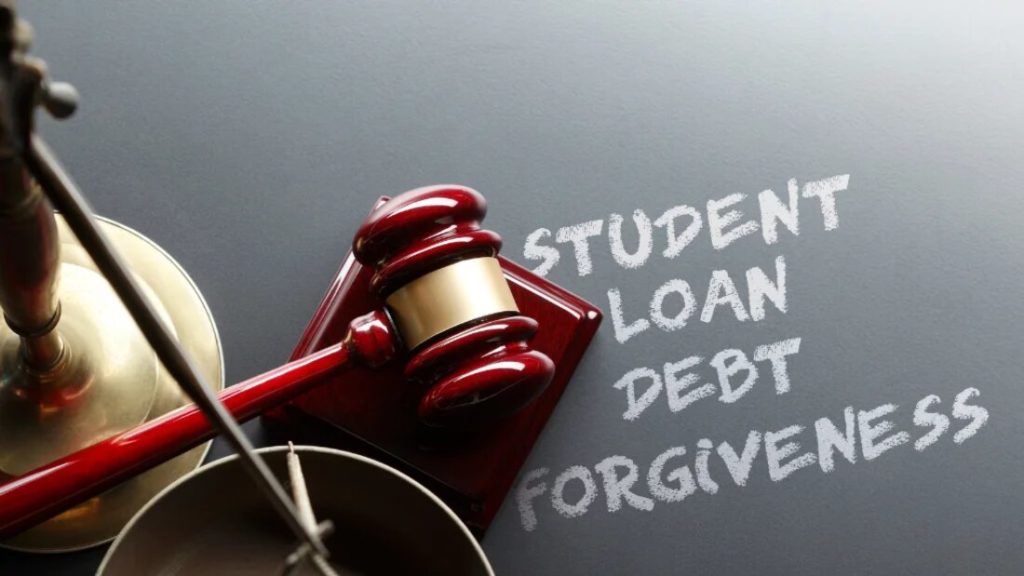student loan forgiveness

student loan forgiveness
-The Pros and Cons of Student Loan Forgiveness
The Pros and Cons of Student Loan Forgiveness
The Student Loan Forgiveness Program is a federal program that was created to help those who have taken out student loans to pay for their education. The program is designed to help those who are struggling to make their Monthly Student Loan Payments. The program can help you get out of debt and can also help you to avoid defaulting on your student loans. There are some pros and cons to the Student Forgiveness Program that you should be aware of before you decide if this program is right for you.
The Pros of the Student Loan Forgiveness Program
The Student Loan Forgiveness Program can help you to get out of debt. This program can help you to consolidate your student loans, which can lower your monthly payments. The program can also help you to get rid of your student loan debt completely.
The Student Loan Program can also help you to avoid defaulting on your student loans. Defaulting on your student loans can have a negative impact on your credit score. Defaulting on your student loans can also lead to wage garnishment.
The Student Loan Forgiveness Program can also help you to get a job. The program can help you to find a job that pays a salary that is high enough to make your monthly student loan payments. The program can also help you to find a job that offers student loan repayment assistance.
The Student Loan Forgiveness Program can also help you to keep your existing job. The program can help you to keep your job if you are struggling to make your monthly student loan payments. The program can also help you to keep your job if you are at risk of defaulting on your student loans.
The Cons of the Student Loan Forgiveness Program
The Student Loan Forgiveness Program can also have some disadvantages. The program can take up to 20 years to complete. The program can also be difficult to keep up with.
The Student Forgiveness Program can also be a burden on your taxes. The program can increase your tax liability. The program can also reduce your eligibility for certain tax deductions.
-The Different Types of Student Loan Forgiveness Programs
The Different Types of Student Loan Forgiveness Programs
There are a variety of student loan programs available for those who have federal student loans. The type of forgiveness program you may be eligible for depends on the type of loan you have, your employment situation, and other factors.
The five major types of forgiveness programs are:
1. Public Service Loan Forgiveness
2. Teacher Loan Forgiveness
3. Perkins Loan Forgiveness
4. Income-Based Repayment Forgiveness
5. Pay As You Earn Forgiveness
Public Service Loan Forgiveness
The Public Service Loan Forgiveness program is available to those who work full-time for a government or non-profit organization. To be eligible, you must have made 120 qualifying monthly payments on your Direct Loans after October 1, 2007. Qualifying payments are those made while you are employed full-time by a qualifying employer and are made under a qualifying repayment plan.
Teacher Loan Forgiveness
The Teacher Loan Forgiveness program is available to those who teach full-time for five complete and consecutive academic years in a low-income elementary or secondary school or educational service agency. To be eligible, you must have made 120 qualifying monthly payments on your Direct Loans after October 1, 2007. Qualifying payments are those made while you are employed full-time by a qualifying employer and are made under a qualifying repayment plan.
Perkins Loan Forgiveness
The Perkins Loan Forgiveness program is available to those who work in certain public service or teaching positions. To be eligible, you must have made 120 qualifying monthly payments on your Perkins Loans after October 1, 2007. Qualifying payments are those made while you are employed in a qualifying public service or teaching position and are made under a qualifying repayment plan.
Income-Based Repayment Forgiveness
The Income-Based Repayment Forgiveness program is available to those with Direct Loans or FFEL Program Loans. To be eligible, you must have made 120 qualifying monthly payments on your loans after October 1, 2007. Qualifying payments are those made while you are enrolled in
-How to Qualify for Student Loan Forgiveness
The Public Service Loan Forgiveness Program is a federal program that forgives the remaining balance on your student loans if you have made 120 qualifying monthly payments while working full-time for a qualifying employer.
To qualify for this program, you must:
-Have made 120 qualifying monthly payments on your student loans
-Work full-time for a qualifying employer
-Work in a qualifying public service job
If you think you might qualify for this program, the first step is to contact your loan servicer and ask about the program. You can also visit the Department of Education’s website for more information.
-The Benefits of Student Loan Forgiveness
There are a number of reasons why student loan forgiveness can be beneficial. First, it can help to reduce your overall debt burden. If you have a large amount of student loan debt, forgiven debt can help to reduce your monthly payments and make it easier to manage your finances.
Second, student loan forgiveness can give you a fresh start. If you have been struggling to make your payments, or if you have defaulted on your loans, loan forgiveness can give you a chance to start over. This can help you to improve your credit score and make it easier to qualify for future loans.
Third, student loan forgiveness can free up money for other purposes. If you have a lot of student loan debt, you may be struggling to make ends meet. Forgiven debt can help you to free up money for other expenses, such as rent, food, or utilities.
Fourth, student loan forgiveness can help you to pursue your goals. If you have been struggling to repay your loans, forgiveness can help you to focus on your career or educational goals.
Finally, student loan forgiveness can provide peace of mind. If you are struggling to repay your loans, the thought of having your debt forgiven can be a great source of relief.
If you are considering student loan forgiveness, it is important to understand the different programs that are available. There are a number of student loan forgiveness programs, and each has its own eligibility requirements and benefits. Be sure to research the different programs to find the one that is right for you.
-The Disadvantages of Student Loan Forgiveness
The Disadvantages of Student Loan Forgiveness
The Student Loan Forgiveness Program is a government initiative that was created to help students who are struggling to repay their student loans. The program is designed to forgive the remaining balance of your student loans if you have made regular payments for a certain period of time. While this program may sound like a great way to get out of student loan debt, there are some disadvantages that you should be aware of before you decide to apply for the program.
One of the biggest disadvantages of the Loan Forgiveness Program is that it is only available to certain types of loans. If you have private loans, you will not be eligible for the program. This means that if you have a high interest rate on your private loans, you will still be responsible for paying off the entire balance.
Another downside to the program is that it can take a long time to qualify. In order to qualify, you must make regular payments on your student loans for a certain period of time. This period can be up to 20 years, which means that it could take a while before you see any forgiveness.
Further details
Finally, the Student Forgiveness Program can be difficult to qualify for. There are a number of requirements that you must meet in order to be eligible, and the process can be complicated. If you are not sure whether or not you qualify, it is best to speak with a student loan counselor or financial advisor to get more information.
Despite the disadvantages of the Student Loan Forgiveness Program, it can still be a helpful option for those who are struggling to repay their student loans. If you think that you might be eligible, it is important to speak with a financial advisor to see if the program is right for you.
-The Bottom Line on Student Loan Forgiveness
The Bottom Line on Student Loan Forgiveness
The Public Service Loan Forgiveness program is the federal government’s primary student loan program. If you work for a government or not-for-profit organization, you may be eligible for forgiveness after 10 years of payments.
The Teacher Loan Forgiveness program forgives up to $17,500 of your student loans if you teach full-time for five complete and consecutive academic years in a low-income elementary or secondary school or educational service agency.
The Perkins Loan Cancellation and Discharge program forgives 100% of your Perkins Loans if you teach full-time for five complete and consecutive academic years in a low-income elementary or secondary school or educational service agency.
The Income-Based Repayment Plan forgives any remaining student loan debt after 25 years of payments if you work in certain public service jobs.
The Pay As You Earn Repayment Plan forgives any remaining student loan debt after 20 years of payments if you work in certain public service jobs.
The Student Loan for Total and Permanent Disability Discharge forgives your student loans if you are totally and permanently disabled.
The Student Loan Repayment Assistance for Attorneys program provides repayment assistance to qualifying attorneys working in certain public service jobs.
The Bottom Line
The federal government offers several student loan programs for borrowers who work in public service jobs. If you are struggling to repay your student loans, you may be eligible for one of these programs.





